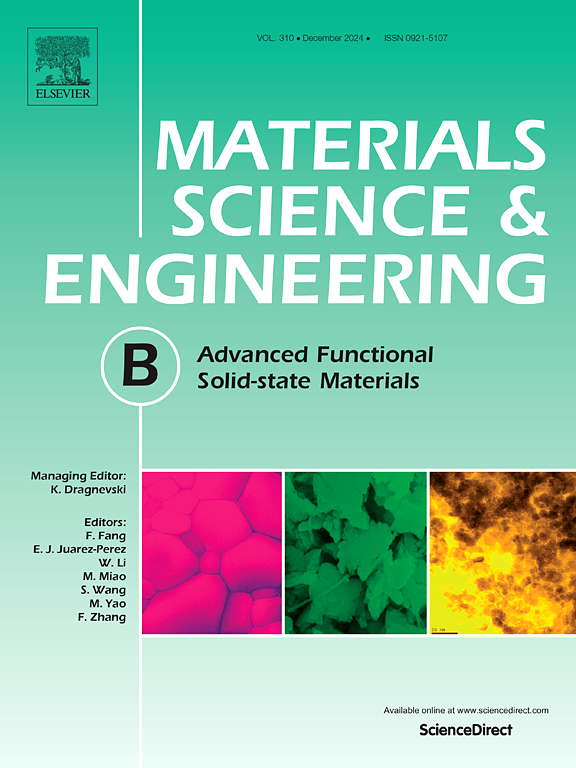Crosslinked P(VDF-HFP)/PEDOT:PSS-P(VDF-HFP) blend bilayer films with strong interfacial polarization for actuators
IF 3.9
3区 材料科学
Q2 MATERIALS SCIENCE, MULTIDISCIPLINARY
引用次数: 0
Abstract
Electroactive polymer materials are widely applied in wearable electronic devices and artificial muscles because of their spontaneous polarization under the electric field. PVDF and its copolymers are the most common ferroelectric polymers, but it is difficult to produce large deformation under low electric field due to its poor flexibility and relatively low permittivity. In this paper, P(VDF-HFP) was reacted with polyether amine to prepare ferroelectric elastomer with low crosslinking density. As a plasticizer and crosslinker, polyether amine significantly reduced the Young’s modulus and the crystallinity of the P(VDF-HFP) films. The bending displacement of the films could reach 1.78 mm under the voltage of 2000 V, which was 16 times that of the P(VDF-HFP) film. In addition, due to the significant diversity in permittivity between the two layers of the films, there was a significant interface polarization in the bilayer films. The PEDOT:PSS/P(VDF-HFP) films further improved the bending electromechanical properties of the crosslinked membrane, and bending displacement of the bilayer films enormously increased to 8.095 mm under the voltage of 2000 V.
交联P(VDF-HFP)/PEDOT:具有强界面极化的PSS-P(VDF-HFP)混合双层薄膜作动器
电活性高分子材料因其在电场作用下的自发极化特性,在可穿戴电子器件和人造肌肉中得到了广泛的应用。PVDF及其共聚物是最常见的铁电聚合物,但由于其柔韧性差,介电常数相对较低,在低电场下难以产生大的变形。本文将P(VDF-HFP)与聚醚胺反应制备低交联密度的铁电弹性体。聚醚胺作为增塑剂和交联剂,显著降低了P(VDF-HFP)薄膜的杨氏模量和结晶度。在2000 V电压下,薄膜的弯曲位移达到1.78 mm,是P(VDF-HFP)薄膜的16倍。此外,由于两层膜之间介电常数的显著差异,在双层膜中存在明显的界面极化。PEDOT:PSS/P(VDF-HFP)薄膜进一步改善了交联膜的弯曲机电性能,在2000 V电压下,双层膜的弯曲位移大幅增加,达到8.095 mm。
本文章由计算机程序翻译,如有差异,请以英文原文为准。
求助全文
约1分钟内获得全文
求助全文
来源期刊

Materials Science and Engineering: B
工程技术-材料科学:综合
CiteScore
5.60
自引率
2.80%
发文量
481
审稿时长
3.5 months
期刊介绍:
The journal provides an international medium for the publication of theoretical and experimental studies and reviews related to the electronic, electrochemical, ionic, magnetic, optical, and biosensing properties of solid state materials in bulk, thin film and particulate forms. Papers dealing with synthesis, processing, characterization, structure, physical properties and computational aspects of nano-crystalline, crystalline, amorphous and glassy forms of ceramics, semiconductors, layered insertion compounds, low-dimensional compounds and systems, fast-ion conductors, polymers and dielectrics are viewed as suitable for publication. Articles focused on nano-structured aspects of these advanced solid-state materials will also be considered suitable.
 求助内容:
求助内容: 应助结果提醒方式:
应助结果提醒方式:


